Thingiverse

Gothic Chess by lauriebonnell52
by Thingiverse
Last crawled date: 3 years ago
In total 37 *.STL files are required to perform this task and it is intended to be a group project. Collaborative efforts encourage learning from each other’s talents, that being said one person can create this project on their own.
Scaling at a uniform scale or sectioning the model may improve the outcome if the printer used is not large enough to make the model components in one piece.
To summarize this project is about gothic creationism. To build out and up, this is the basic premise of 3d modeling. The chess pcs have base guides with arrows describing the direction of each player’s capabilities making the learning curve much easier. Just like Microsoft made icons say a thousand words, these guides will stop the novice questioning how each player moves and how they coordinate attacks. The middle pedestal should be made from clear crystal which is easy enough if you make the reverse mould from the models included.
The board is elongated and risen up at each rank, creating a more realistic perspective of the game but changing no other aspect of the games rules. Knights attack and defense patterns are circles of the opposite color from the moves start but in gothic chess the attack profile is an oval that changes depending on the placement of the pc on the board. Similarly the angles of attack from queens and bishops are more curved and less obvious increasing the level of competition.
I used auto cad for the starting models and imported to 3d studio max which I then exported as STL files for printing. I could have used other formats but STL seems to be most often used for printing. I used very simple math to design the board with a logical and even progression to keep the games logic intact. Team work between the player peace’s are what I am expecting from the project participants.
Objectives in this project are scaling or sectioning the model, testing fit between components and adjusting sizes to have a more smooth fit. Using different mediums like making reverse moulds for liquid crystal, leather or cloth for the covering, painting the exterior and blocks of the board as well as taking interest in chess itself as the greatest math teacher in history.
The Audience should be anyone willing to learn chess with icons beneath each piece that teach their moves. The project participants should be intermediate modellers able to address issues that arise from fit of components and testing smaller samples befor making a commitment to a larger project. Any artistic student will see the simplicity of the math creating something new from something old.
In preparation the student s should test themselves and others on Staunton chess sets to investigate how easy or difficult this model is. They should consider the cost of leather for the binding and the crystal for the pedestals of each piece; they should also consider improving the design of the cover or outside or even changes to the step and depth of the design. The size of printers and their precision will be variables that may differ from one class to the next which will change their approach to completing the model and not the least of preparation is the finding of good instructors and equipment.
The most obvious first step would be making the chess pieces in one mould (provided) test the chess pcs on a regular Staunton chess board for sizing and then make the pieces in three steps also included as models of each separate pc. Creating the mid pedestal will require making a reverse mould as each pedestal is unique to the type of pc and base. Making a Boolean subtraction of the words in the base from the mould of the mid-section would make the fit better but the pc themselves may have to be glued or otherwise connected by modeling male and female fixtures.
The board will fold into a book after a cover binding is used, so investing some time into the design and sizing is required. My prototype works well with Velcro for fasteners, but I will not include the size of each cover, that will ensure that the components are not already done and simply put together after printed. (A plastic hinged connection will work just as well as leather)
The playing field sides are identical except for the male and female connections that also could be designed better as incentive for the class to show off their ingenuity. That being said the board is 16” at the longest points which is out of limits for smaller marker bot systems, so the board will have to be made in components (models included) or sectioned or scaled uniformly to complete the project.
I hand painted my prototype which could also be a good part of the project and I also made models of people for the pcs not included. The cooperation of students with different skill sets could produce similar yet different results which are the basics of chess and math.
As result of this project I am hoping the students learn how easy adapting their own creativity to known art work can be a very fulfilling thing to do. Modeling and using different mediums together should teach them how cooperative efforts make the best music. The math I used is simple and repeatable in other projects that they hopefully will have lots of in their future. I have been an architectural draftsman and 3d modeller for over twenty years and find that this is the most rewarding of any work I have ever done. It is true that if you work at what you love you will never really work a day in your life.
Scaling at a uniform scale or sectioning the model may improve the outcome if the printer used is not large enough to make the model components in one piece.
To summarize this project is about gothic creationism. To build out and up, this is the basic premise of 3d modeling. The chess pcs have base guides with arrows describing the direction of each player’s capabilities making the learning curve much easier. Just like Microsoft made icons say a thousand words, these guides will stop the novice questioning how each player moves and how they coordinate attacks. The middle pedestal should be made from clear crystal which is easy enough if you make the reverse mould from the models included.
The board is elongated and risen up at each rank, creating a more realistic perspective of the game but changing no other aspect of the games rules. Knights attack and defense patterns are circles of the opposite color from the moves start but in gothic chess the attack profile is an oval that changes depending on the placement of the pc on the board. Similarly the angles of attack from queens and bishops are more curved and less obvious increasing the level of competition.
I used auto cad for the starting models and imported to 3d studio max which I then exported as STL files for printing. I could have used other formats but STL seems to be most often used for printing. I used very simple math to design the board with a logical and even progression to keep the games logic intact. Team work between the player peace’s are what I am expecting from the project participants.
Objectives in this project are scaling or sectioning the model, testing fit between components and adjusting sizes to have a more smooth fit. Using different mediums like making reverse moulds for liquid crystal, leather or cloth for the covering, painting the exterior and blocks of the board as well as taking interest in chess itself as the greatest math teacher in history.
The Audience should be anyone willing to learn chess with icons beneath each piece that teach their moves. The project participants should be intermediate modellers able to address issues that arise from fit of components and testing smaller samples befor making a commitment to a larger project. Any artistic student will see the simplicity of the math creating something new from something old.
In preparation the student s should test themselves and others on Staunton chess sets to investigate how easy or difficult this model is. They should consider the cost of leather for the binding and the crystal for the pedestals of each piece; they should also consider improving the design of the cover or outside or even changes to the step and depth of the design. The size of printers and their precision will be variables that may differ from one class to the next which will change their approach to completing the model and not the least of preparation is the finding of good instructors and equipment.
The most obvious first step would be making the chess pieces in one mould (provided) test the chess pcs on a regular Staunton chess board for sizing and then make the pieces in three steps also included as models of each separate pc. Creating the mid pedestal will require making a reverse mould as each pedestal is unique to the type of pc and base. Making a Boolean subtraction of the words in the base from the mould of the mid-section would make the fit better but the pc themselves may have to be glued or otherwise connected by modeling male and female fixtures.
The board will fold into a book after a cover binding is used, so investing some time into the design and sizing is required. My prototype works well with Velcro for fasteners, but I will not include the size of each cover, that will ensure that the components are not already done and simply put together after printed. (A plastic hinged connection will work just as well as leather)
The playing field sides are identical except for the male and female connections that also could be designed better as incentive for the class to show off their ingenuity. That being said the board is 16” at the longest points which is out of limits for smaller marker bot systems, so the board will have to be made in components (models included) or sectioned or scaled uniformly to complete the project.
I hand painted my prototype which could also be a good part of the project and I also made models of people for the pcs not included. The cooperation of students with different skill sets could produce similar yet different results which are the basics of chess and math.
As result of this project I am hoping the students learn how easy adapting their own creativity to known art work can be a very fulfilling thing to do. Modeling and using different mediums together should teach them how cooperative efforts make the best music. The math I used is simple and repeatable in other projects that they hopefully will have lots of in their future. I have been an architectural draftsman and 3d modeller for over twenty years and find that this is the most rewarding of any work I have ever done. It is true that if you work at what you love you will never really work a day in your life.
Similar models
thingiverse
free
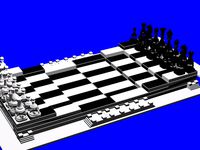
Gothic Chess by lauriebonnell52
...cooperation of students with different skill sets could produce similar yet different results which are the basics of chess...
grabcad
free

Chess board and pieces
...chess board and pieces
grabcad
created using staunton pattern.
3d_export
$8

bishop mould
...t
this is mould for bishop which is use for playing in chess.<br>i can make mould for any component with proper dimensions
grabcad
free

Candle Holder
...a unique and creative designs. final output?
the final output will be 5 models and 5 renders.
grabcad
free

Chess Board
...chess board
grabcad
i have used drawings of chess pieces from this site https://cnckabinet.wordpress.com/
unity_asset_store
$15

Classic Staunton Chess Board And Pieces (PBR & HDRP versions)
...pbr & hdrp versions) asset from cornercase studio. find this & other characters options on the unity asset store.
3dwarehouse
free

chessboard
...chessboard
3dwarehouse
chessboard with staunton chess pieces #chess #chessboard #staunton
thingiverse
free

Another Chess Set by zen13
...cept for the knight. however, the knight has built-in support material on the 3d model. i'm testing different support shapes.
grabcad
free

chess board
...chess board
grabcad
chess board i made cause i cba doing school work might make chess pieces if i can be bothered
grabcad
free

Chess Assembly
...aced them where they needed to be put and then mated them to the board itself. lastly i colored each of side of the chess pieces.
Lauriebonnell52
thingiverse
free

knight by lauriebonnell52
...knight by lauriebonnell52
thingiverse
night
thingiverse
free

bishop by lauriebonnell52
...bishop by lauriebonnell52
thingiverse
bishop
thingiverse
free

king by lauriebonnell52
...king by lauriebonnell52
thingiverse
just a king
thingiverse
free

pawn by lauriebonnell52
...pawn by lauriebonnell52
thingiverse
pawn chess pc
thingiverse
free

rrok by lauriebonnell52
...rrok by lauriebonnell52
thingiverse
rook chess pc
thingiverse
free

queen with base by lauriebonnell52
...queen with base by lauriebonnell52
thingiverse
same as king pc iwant to make the middle liquied crystal.
thingiverse
free

chess variant board by lauriebonnell52
...r myself someday. i made a prototype out of foam and it works just like staunten chess but a better perspective of a real battle.
thingiverse
free

Gothic Chess by lauriebonnell52
...warding of any work i have ever done. it is true that if you work at what you love you will never really work a day in your life.
thingiverse
free

X-UAV stocking NERF Bit by shivinteger
...[6] thing url : http://www.thingiverse.com/thing:1242761 [6] thing author : lauriebonnell52 [6] thing licence : creative commons - attribution -...
Gothic
3d_export
$5
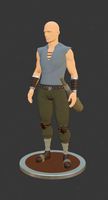
gothic miner
...gothic miner
3dexport
a miner from an old mine, gothic
3ddd
$1
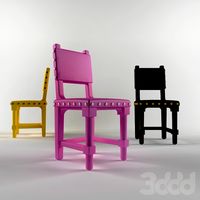
Moooi, Gothic Chair
... стул , gothic
стул из коллекции gothic фабрики moooi
90x44,5x46cm
3ddd
free
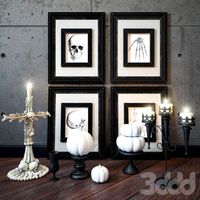
Gothic decor
... череп , тыква , свеча
gothic decorative set
3d_export
$89
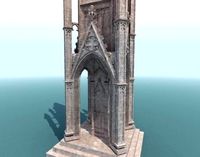
Gothic 3D Model
...gothic 3d model
3dexport
architecture gothic memorial cross building
gothic 3d model spwar 4 3dexport
3d_export
$12
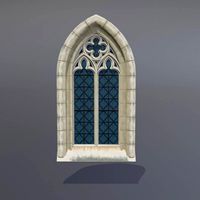
gothic window
...gothic window
3dexport
3d_export
$12
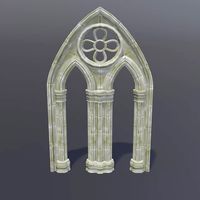
gothic arch
...gothic arch
3dexport
3d_export
$15
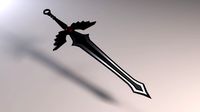
gothic sword
...gothic sword
3dexport
formats
3d_export
$6

gothic cross
...gothic cross
3dexport
formats
turbosquid
$59

Gothic Altar
...squid
royalty free 3d model gothic altar for download as c4d on turbosquid: 3d models for games, architecture, videos. (1632484)
turbosquid
$5

Gothic Throne
...quid
royalty free 3d model gothic throne for download as max on turbosquid: 3d models for games, architecture, videos. (1685373)
Chess
3ddd
free
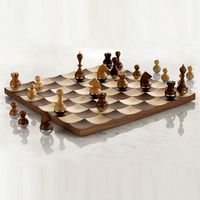
Chess
...chess
3ddd
chess , шахматы
chess
3d_ocean
$6

chess
...chess
3docean
chess game
chess,game
3d_export
$5

chess
...chess
3dexport
chess
3d_export
$5

chess
...chess
3dexport
chess
3d_ocean
$6

Chess
...chess
3docean
chess decor design elements game interior
just chess
3d_export
$5
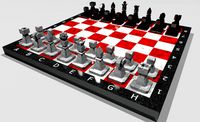
chess
...chess
3dexport
chess modern
3d_export
$5

the chess
...the chess
3dexport
the chess board.
3d_export
free

chess
...chess
3dexport
3d model chess
3d_export
$15

chess
...chess
3dexport
chess complete set with 32 pieces and a board
3d_export
$5
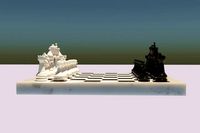
chess
...chess
3dexport
marble chess with ceramic figures, great for interior decoration
